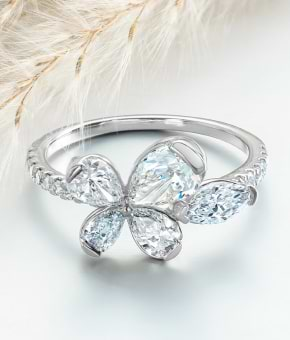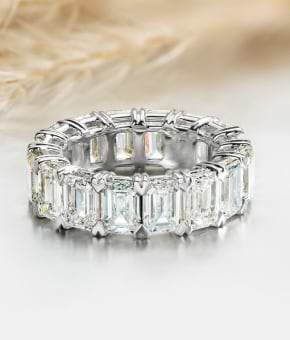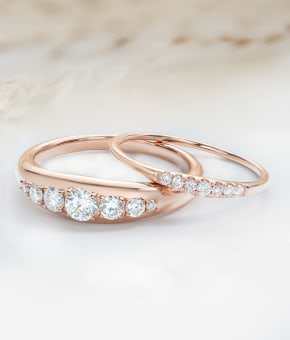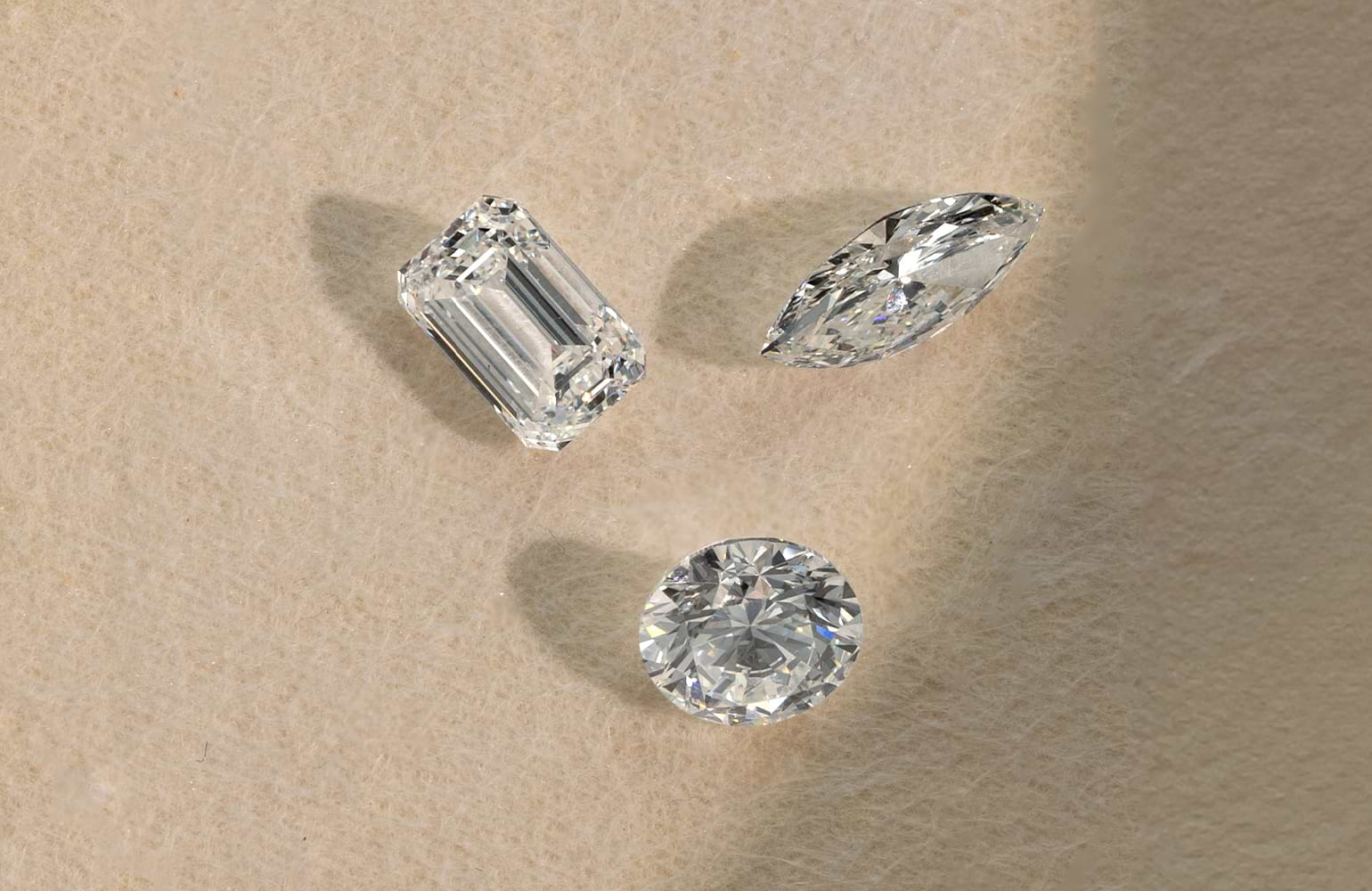

Diamonds are graded and characterized by four main characteristics, which were originally created by the Gemological Institute of America (GIA). These four characteristics are color, clarity, cut, and carat weight, the 4Cs. Use this guide to learn about the 4Cs and familiarize yourself with the essential diamond characteristics that will make your diamond selection a more informed and streamlined process.
What the 4C’s are for Lab Grown Diamonds
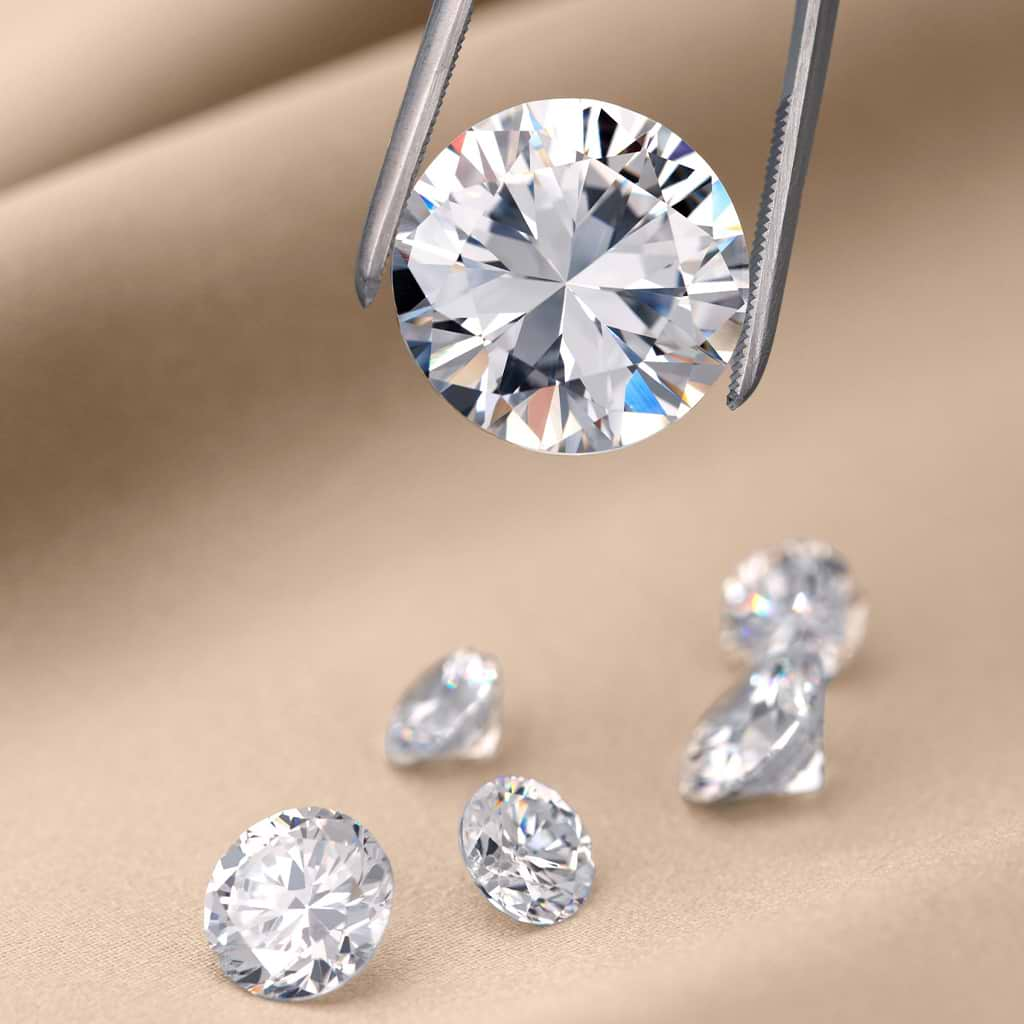
What the 4C’s are for Lab Grown Diamonds
The GIA International Diamond Grading System was developed to standardize how diamonds are graded across the world, ensuring that buyers everywhere can make informed decisions based on a universal set of criteria. This system, which revolves around the 4Cs of diamond grading—cut, color, clarity, and carat weight—is detailed on the GIA diamond grading chart. Significantly, this grading system has been embraced by leading gemological institutes and bodies globally, including the International Gemological Institute (IGI). Notably, IGI set a precedent as the first major diamond grading laboratory to extend the 4Cs grading to Lab Grown Diamonds.
This adoption underscores the equivalency in validity, reliability, and trustworthiness between certificates issued by GIA and those by IGI. For our clients, it's important to understand that most of our diamonds come with IGI certificates, ensuring that they meet the same high standards set by the globally recognized GIA system.
When buying loose diamonds or jewelry, like diamond engagement rings, they often come with a grading report from GIA or IGI providing details of the 4Cs, which can be used for appraisal and insurance purposes. Since lab grown diamonds are real diamonds, they are graded exactly as per the GIA natural diamond grading system, with the same exact parameters used for mined diamonds.
Lab created diamonds are physically, optically, and chemically identical to mined diamonds when compared side by side. This means that quality lab grown diamonds are also officially graded using the 4Cs by independent gemological organizations. The 4Cs of lab grown diamonds will vary, just like in natural diamonds, and they can range in grade from poor to excellent.
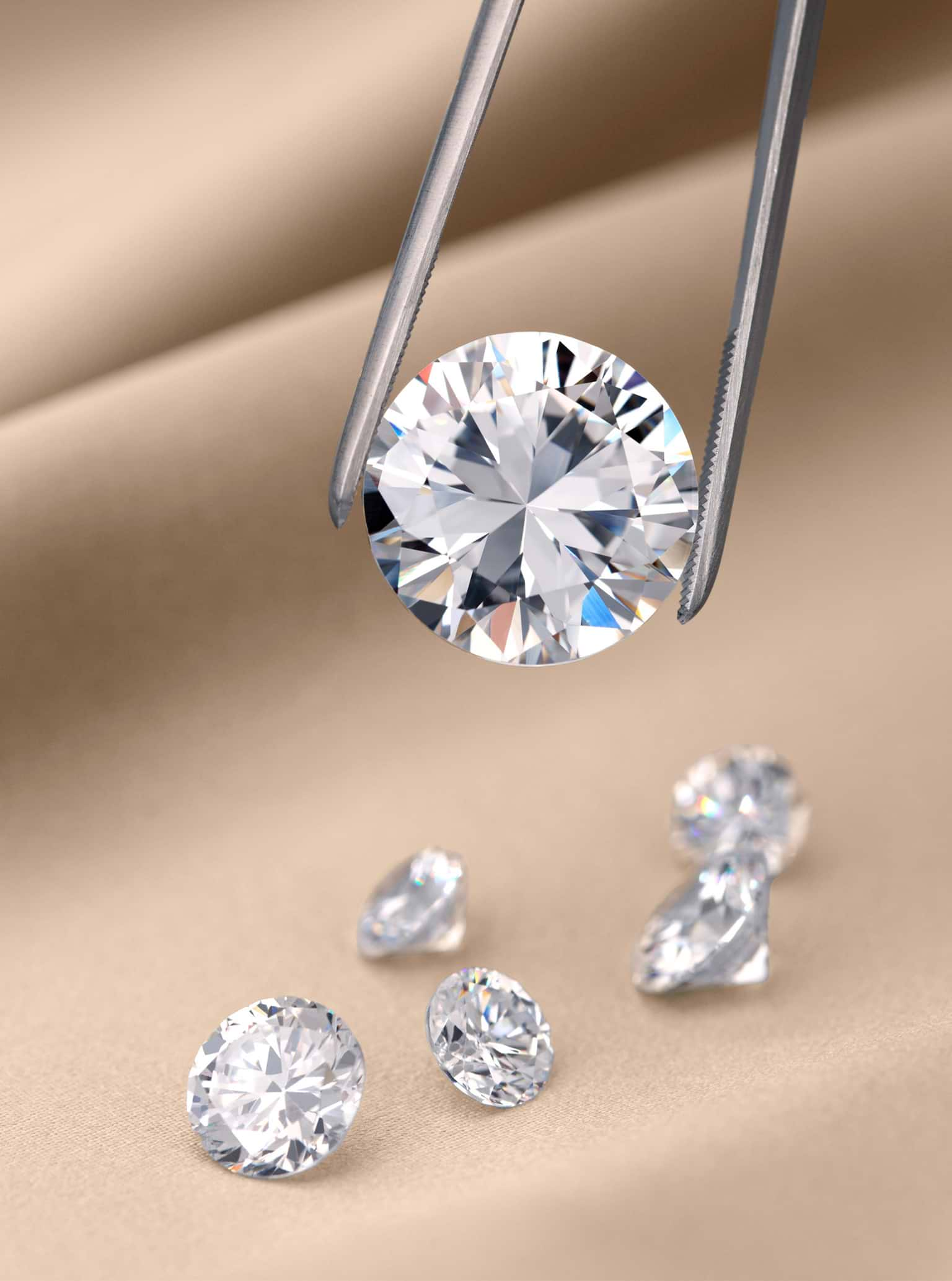
Learn the secrets of the 4Cs of diamond grading to shop like a seasoned expert, ensuring your diamond selection delivers peak quality and unmatched value.
Diamond Cut
A diamond’s cut doesn’t just refer to its shape; it determines how well the diamond captures and refracts light, which produces its inimitable sparkle. Well-cut diamonds are extremely brilliant, fiery, and desirable. Poor-cut diamonds, on the other hand, can appear dull and dark even if they have a high grade of color or clarity.
The intense radiance of well-cut diamonds also gives them the illusion of appearing larger than other diamonds of the same carat weight. Ideal diamonds have elevated levels of brilliance and diameter compared to diamonds with deeper cuts.
Cut is often considered the most important characteristic of the 4C’s. This is because it has the biggest impact on the diamond’s overall appearance and quality. Jewelers recommend paying attention to the cut of a diamond above all else.
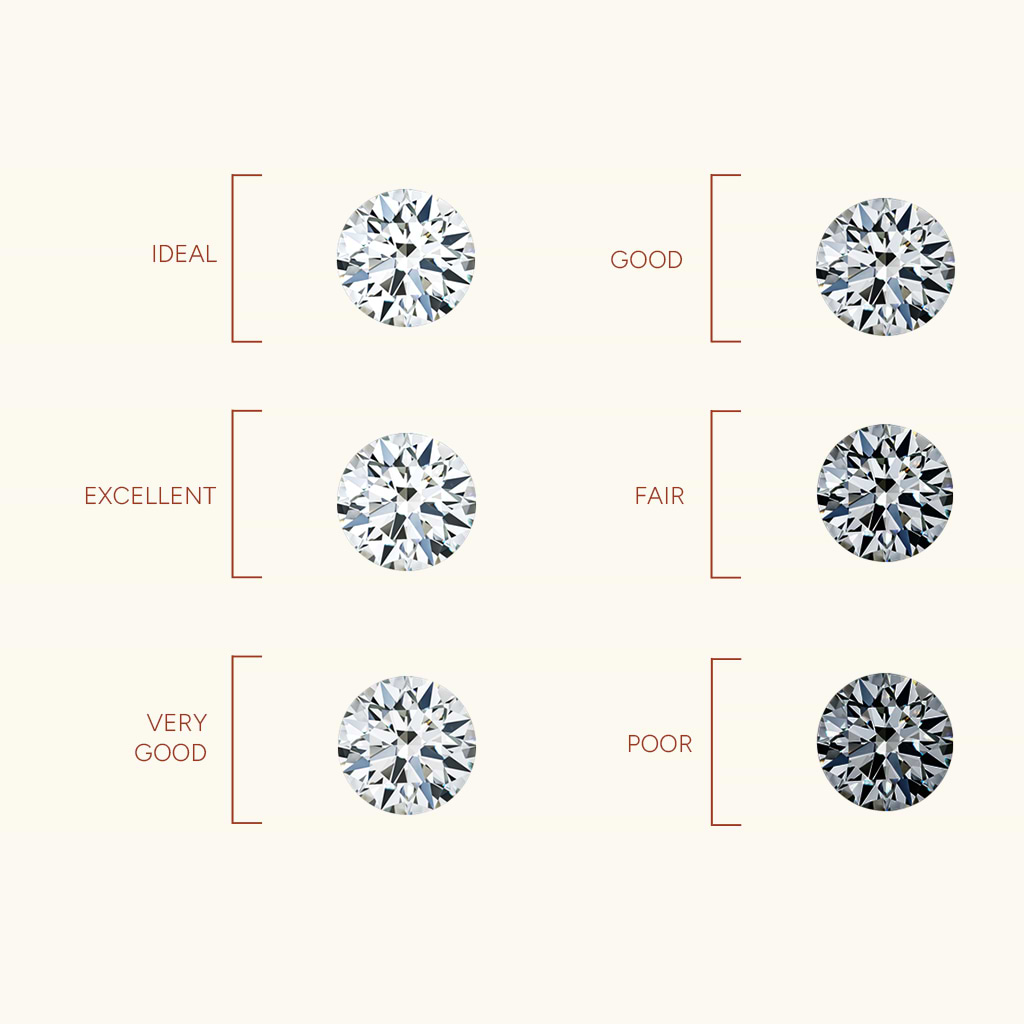
Types Of Diamond Cuts
The diamond’s proportions and symmetry define the quality of the cut. A high-quality cut can only be created by a highly skilled craftsman. Diamonds are graded according to a scale from Ideal to Poor. Even the untrained eye will notice that diamonds with higher cut grades are more sparkly than those with lower cut grades.
- Ideal Cut diamonds have outstanding sparkle and flawless symmetry. They are cut to perfect proportions for refracting light.
- Excellent Cut diamonds have exceptional sparkle and even patterns.
- Very Good Cut diamonds have great sparkle and polish. They are considered symmetrical.
- Good Cut diamonds have a fine sparkle. They have a reasonable level of polish and symmetry.
- Fair Cut diamonds have a low level of sparkle and polish. They are not always symmetrical.
- Poor Cut diamonds appear dim and asymmetrical, with uneven spots on their surface.
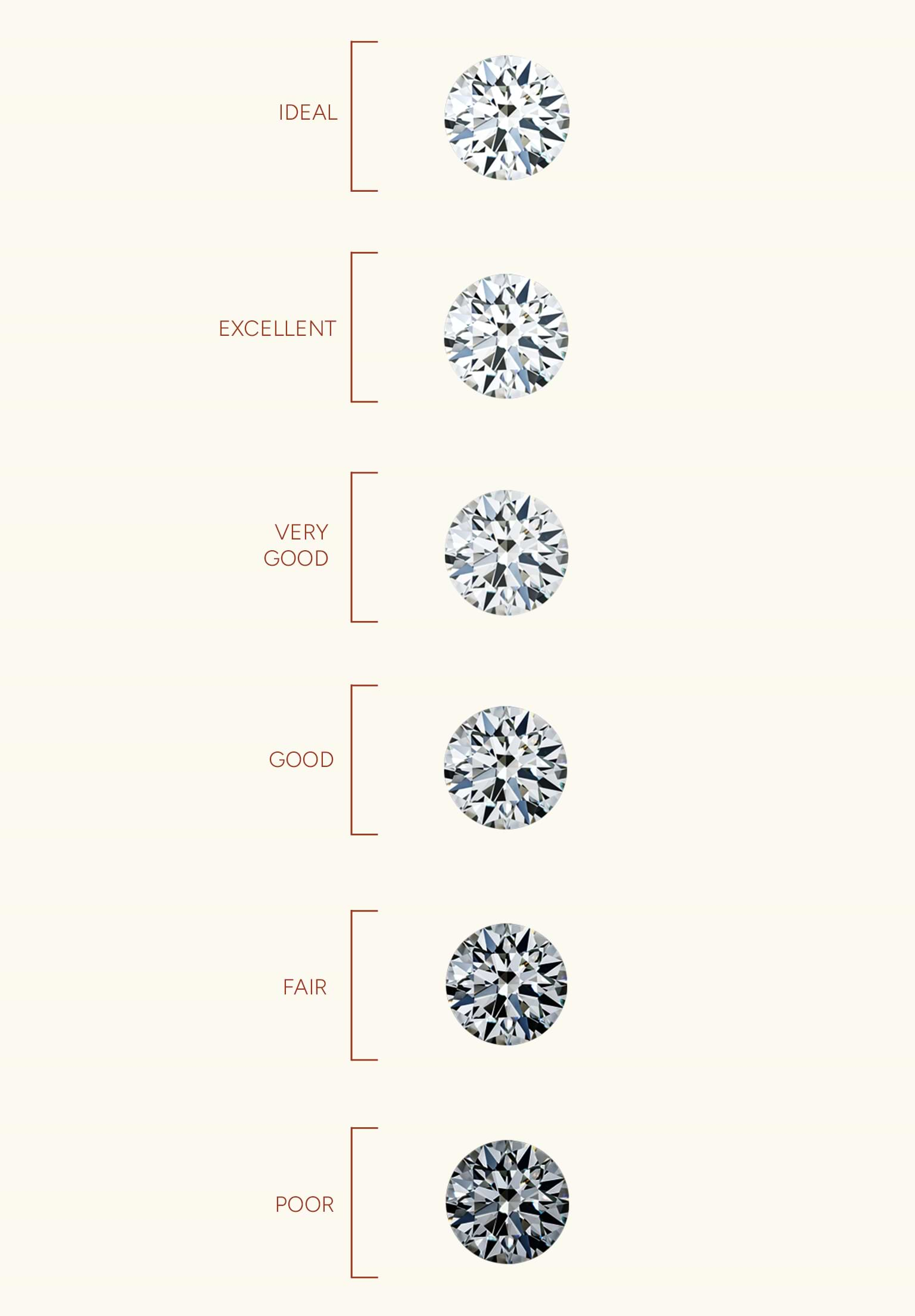
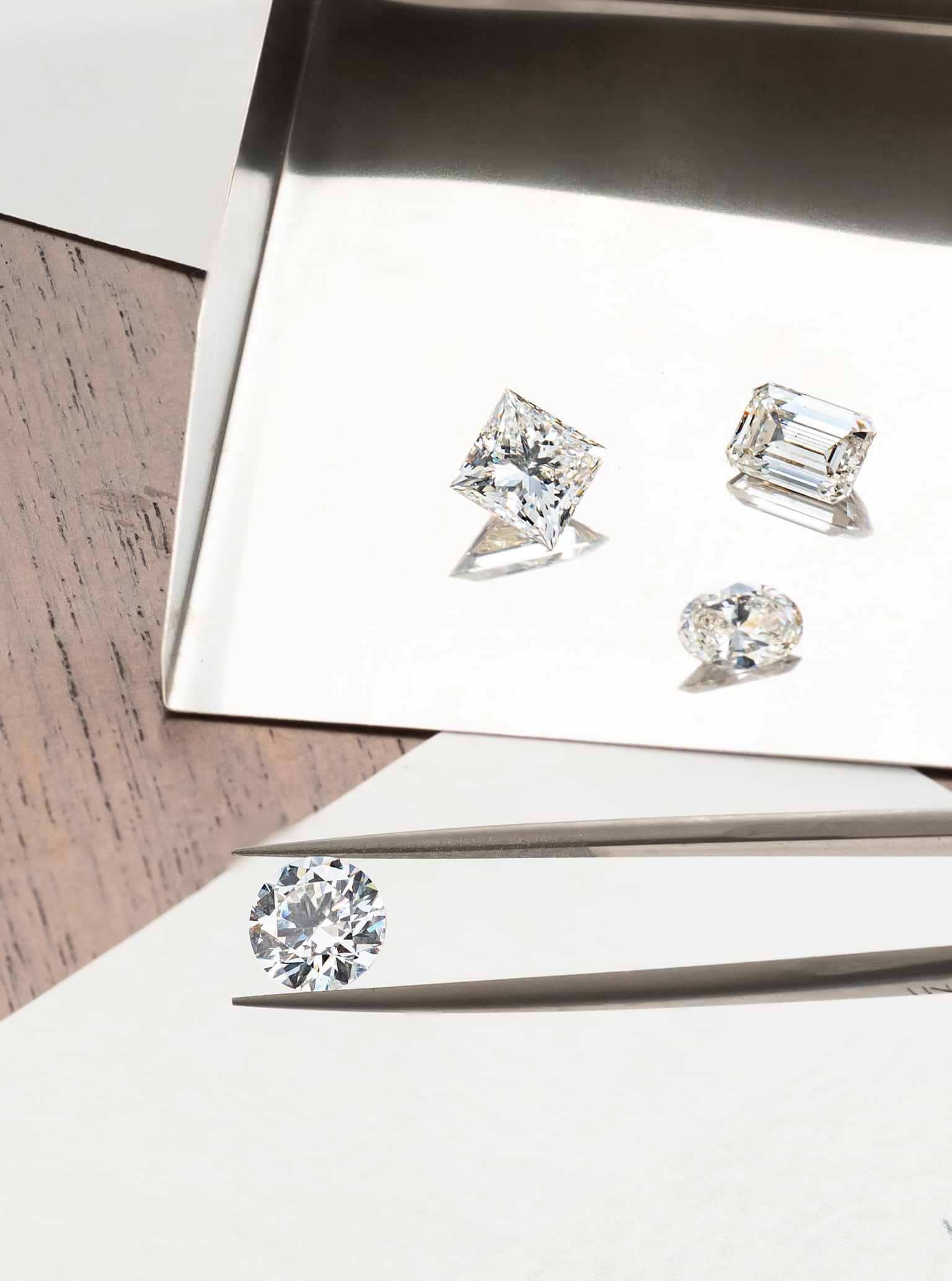
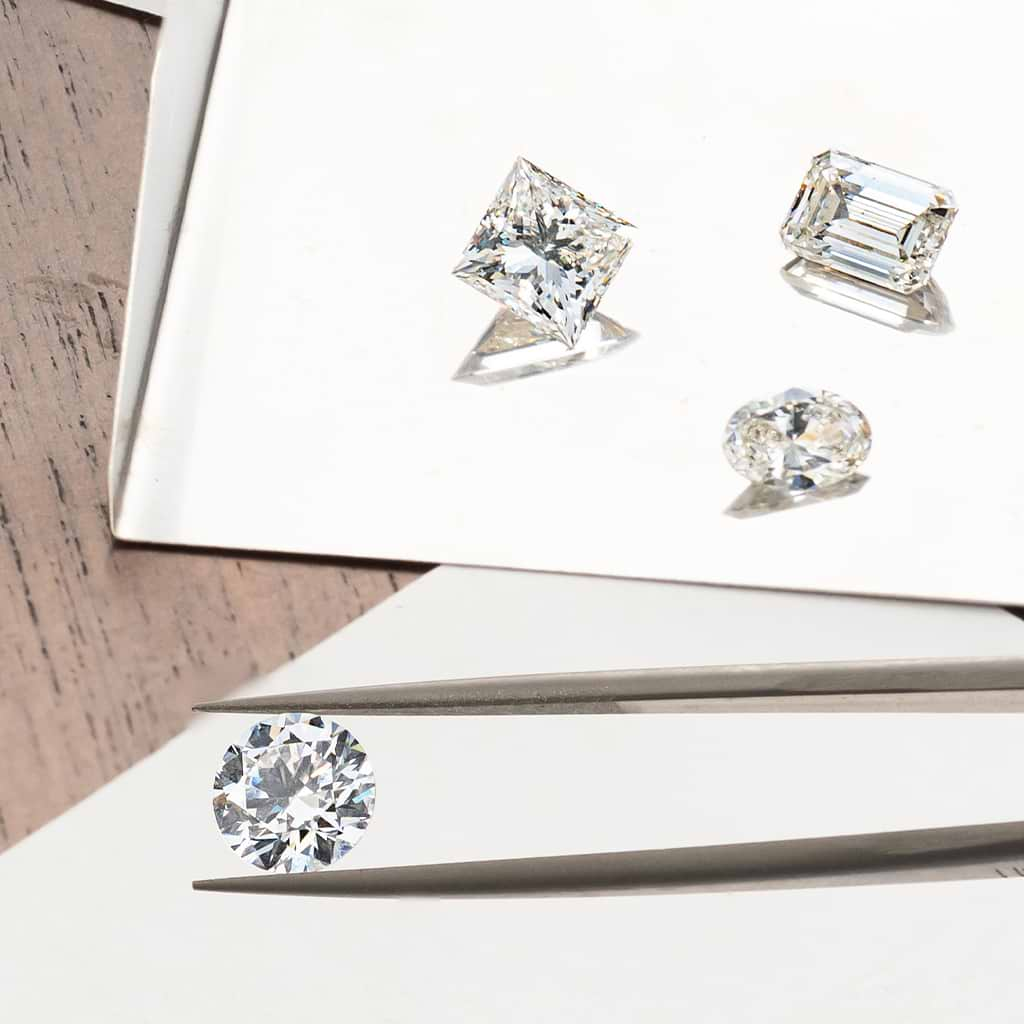
Round & Fancy Shape Diamond Cuts
Only round brilliant diamonds can have an Ideal Cut. The alignments of their facets make it easy to cut perfect proportions for optimal sparkle and symmetry.
Fancy shaped diamonds such as oval, pear, and emerald have different facet alignments, which makes it difficult to attain Ideal Cut level. However, this does not mean that fancy shaped diamonds are poor quality. They can still attain Excellent grades and offer exceptional brilliance and fire.
Brides who desire unique shapes shouldn’t feel like they’re sacrificing quality or beauty when choosing a fancy shaped diamond. Seek out diamonds with Excellent polish and symmetry grades to ensure you’re getting a high-quality stone that highlights your individuality.
Grading Fancy Shape Diamonds
Fancy shaped diamonds have the same grades as round diamonds, but gemologists use a different approach when evaluating them. Round diamonds are graded using precise measurements, while fancy shaped diamonds use a more subjective approach that measures the stone’s appearance and cut execution.
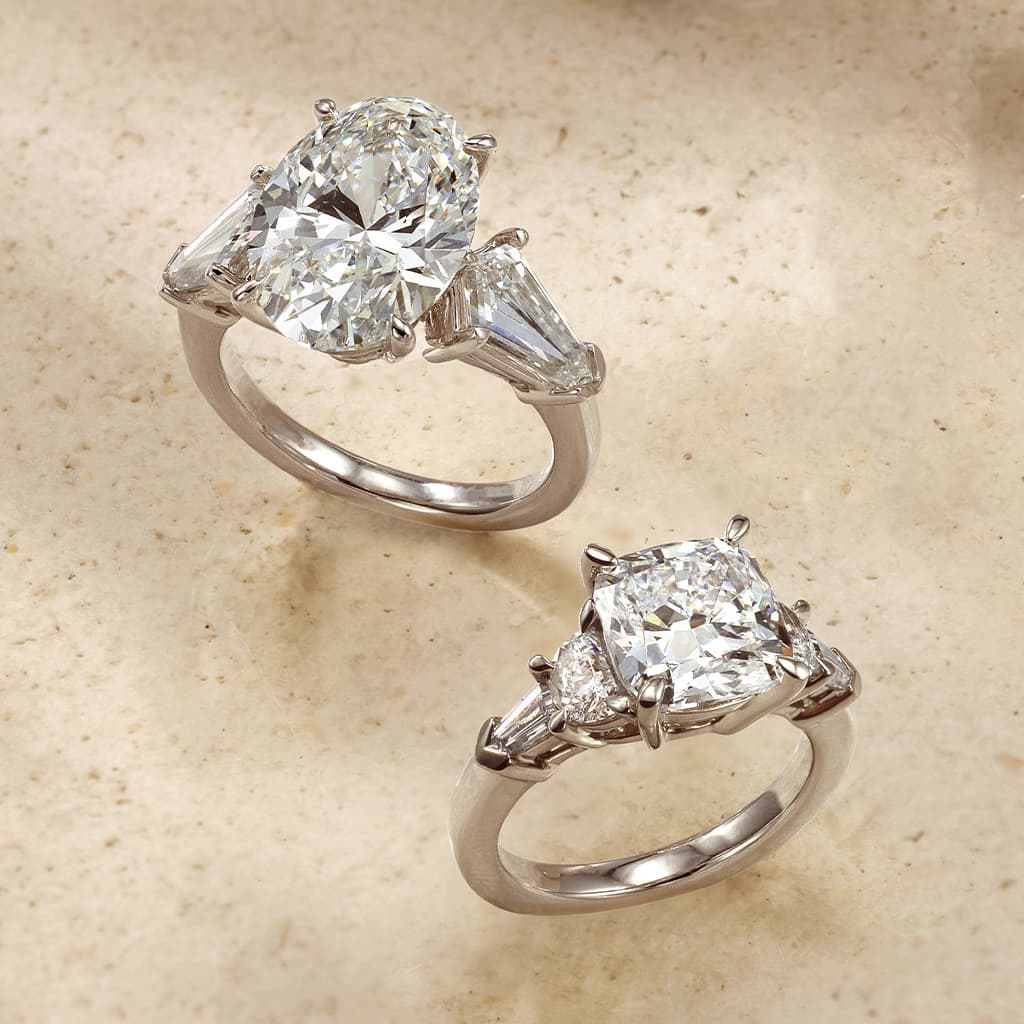
Brilliance, Dispersion, Fire & Scintillation
Any well-cut diamond will have four key characteristics: brilliance, dispersion, fire, and scintillation.
- Brilliance in a diamond refers to its capacity to reflect and refract light, resulting in a sparkling appearance. This optical phenomenon is achieved through precise cutting, which enhances internal reflection and disperses light into colorful flashes.
- Dispersion occurs when light rays separate into flashes of color after hitting the surface of the diamond.
- Fire is the result of dispersion. White light separates into the spectral colors of the rainbow, creating a fiery appearance on the diamond’s surface.
- Scintillation are the flashes of color that are visible whenever the diamond is in motion. It is the play between the fire and whiteness inside the facets of the diamond.
All four elements come together in a well-cut diamond, no matter its shape, to create a magnificent and beautiful sparkle.
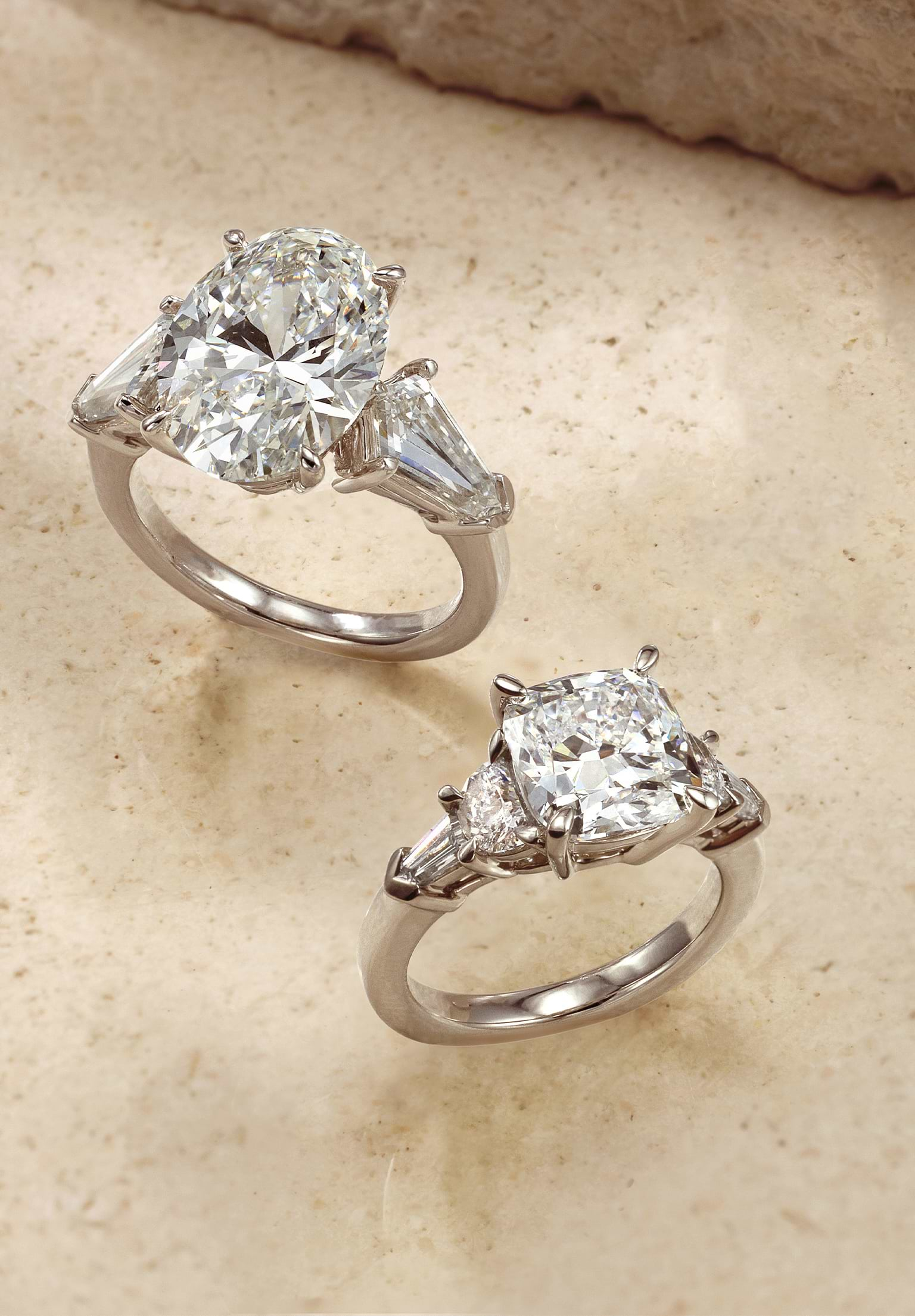
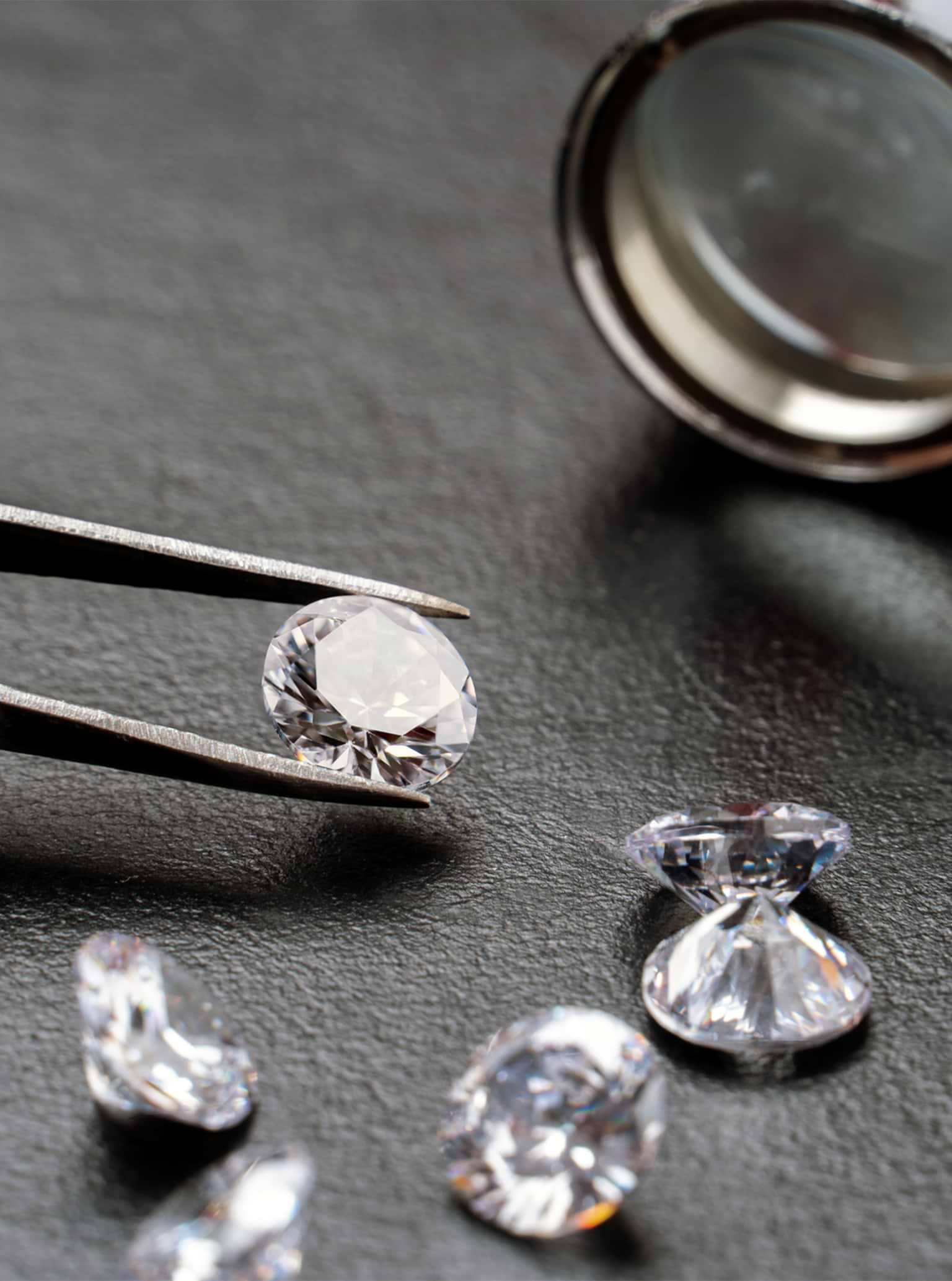
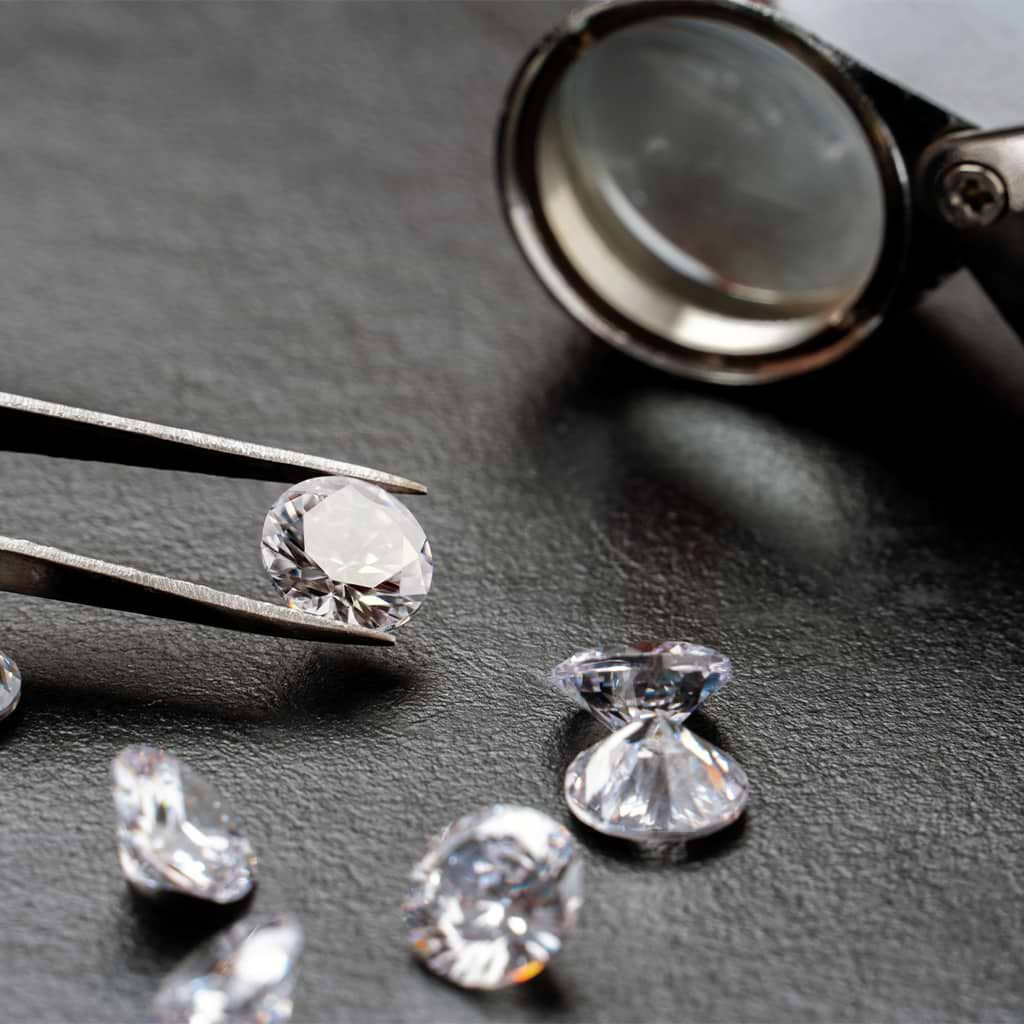
Ideal Cuts
A perfectly cut stone is referred to as an Ideal Cut diamond. These diamonds are cut in a way that reflects back virtually all of the light that enters them.
To produce an Ideal Cut diamond, meticulous attention to detail is required in the cutting process. In an Ideal Cut diamond, the depth and table percentages, crown and pavilion angles, and the girdle thickness are all carefully calibrated.
This results in a diamond that exhibits a superior balance of brilliance, fire, and scintillation, which acts as a prism whenever it interacts with light. This depth of sparkle can make the stone appear larger than it actually is.
Many Ideal Cut diamonds have an appearance that resembles the shapes of hearts and arrows. The hearts are visible from the bottom, while arrows are visible from the sides. These stones are also referred to as Hearts and Arrows diamonds, a playfully romantic nod to Cupid.
Determining Cut in Lab Grown Diamonds
Lab grown diamonds are cut using the same processes and tools as mined diamonds and are therefore graded using the same system.
In addition to being a more ethical and cost-effective choice, lab grown diamonds also tend to have better cuts. Since the synthetic material they’re made from is usually more consistent and has fewer flaws than natural diamonds, it’s easier for cutters to shape them into high-quality stones. This means lab grown diamonds are often cut in a way that brings out their sparkle and beauty.
Cut should be your biggest priority when selecting a diamond since it directly impacts its radiance. Clarity, color, and carat weight can all be secondary factors. Remember that a smaller diamond with a higher quality cut will be more alluring than a larger stone with a worse quality cut.
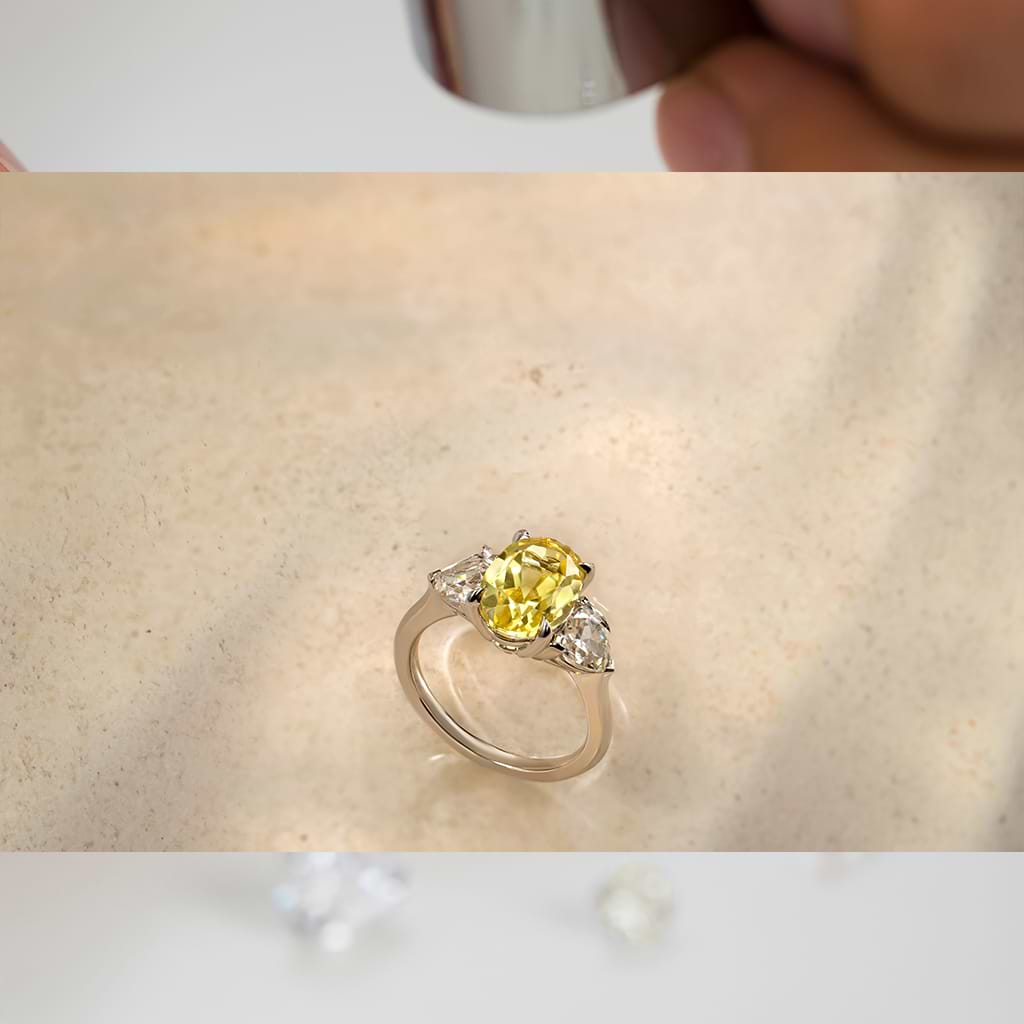
Diamond Color
When looking for the perfect diamond, choose a stone with the least amount of color. Five broad types of diamond color are distinguished on a scale from D to Z: colorless, near colorless, faint, very light, and light.
This grade refers to the lack of color in a diamond. The less color it has, the higher the brilliance and the more it will sparkle. Diamonds are available in every color of the rainbow. However, colorless or white diamonds are traditionally the most valuable.
Jewelers recommend choosing a stone with the least amount of color possible if you want a traditional look. Those who aren’t opposed to color need not worry. However, color is often considered the second most important C since it can impact the diamond’s value.
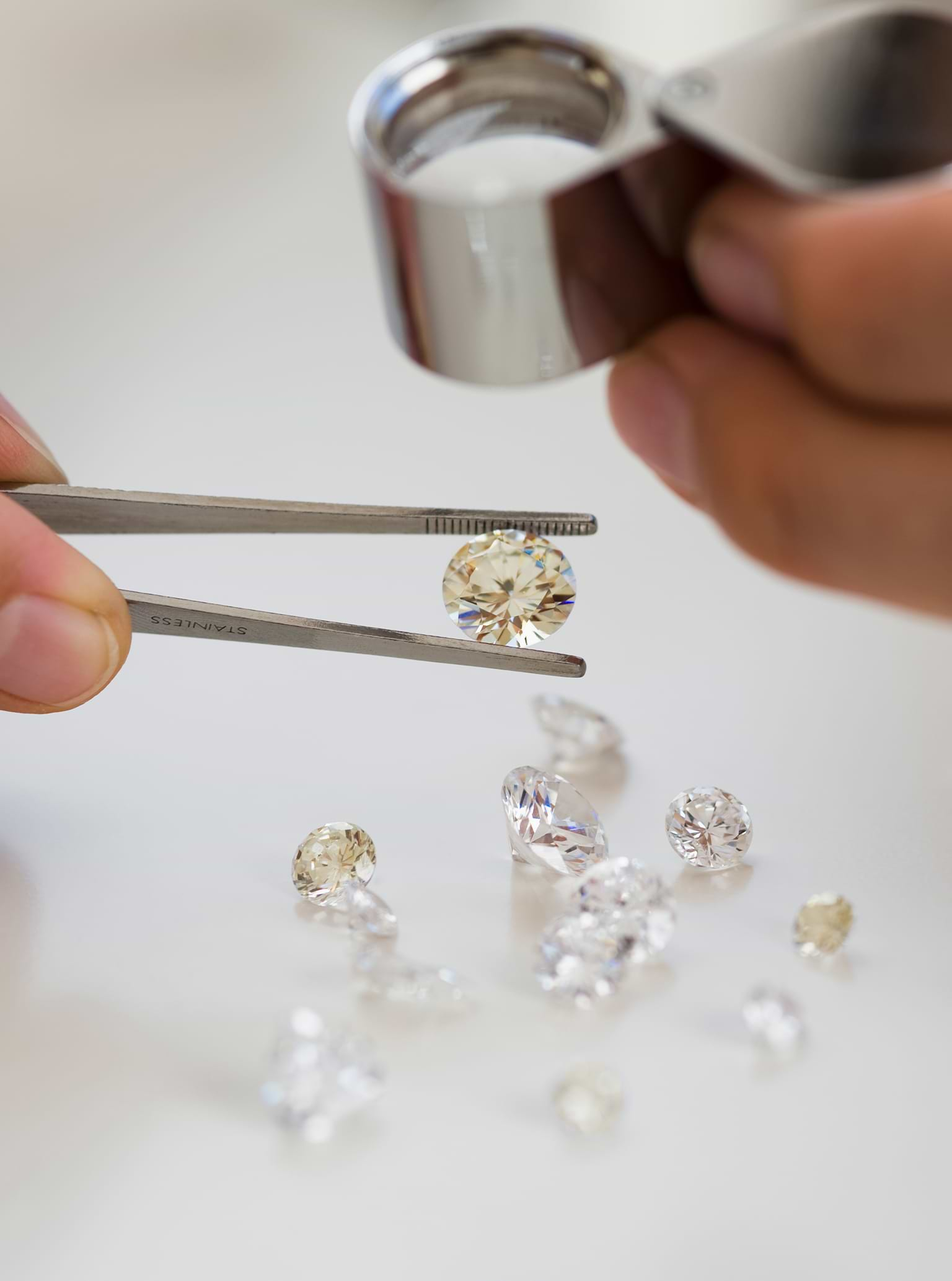
The Diamond Color Scale
Diamond color is graded on a scale of D-Z. Each grade is divided into one of five categories:
- Colorless
- Near colorless
- Faint
- Very Light
- Light
A colorless diamond is almost pure white, while lower grades have a yellowish tint. The trace element of nitrogen causes this. Completely colorless diamonds are considered to be chemically pure and structurally perfect; imperfections and impurities are what cause color variations within diamonds.
Color differences are challenging to determine for an untrained eye. Generally, you won’t be able to see a difference unless the diamonds are two color grades apart, and even then, it will depend on the position of the diamond. If a diamond is face up, which it likely will be, the naked eye won’t see any color. You may see traces of color from the diamond’s side profile, which the ring mount will partially hide.

- Colorless diamonds are grades D-F. These are the rarest and most valuable diamonds of all. They show almost no color. F grade diamonds will have a tiny trace of color, but it will only be visible to gemologists if viewed face down.
- Near colorless diamonds are grades G-J. Diamonds in this range appear colorless when viewed face up but will display trace amounts of colors if viewed face down against a white background. The color will not be visible to an untrained eye once mounted. Near colorless diamonds provide excellent value for money.
- Faint color diamonds are grades K-M. This category features diamonds that might show a trace of color in the face up position. It’s an excellent option for those who enjoy color and want to extend their budgets.
Diamonds in the very light or light categories will often have a yellow hue. Sometimes they may have a brownish hue. These are known as champagne or cognac diamonds, depending on the intensity of the shade. While yellow is caused by nitrogen, brown is thought to be caused by internal graining. The earthy color is a result of structural irregularities combined with impurities like nitrogen.
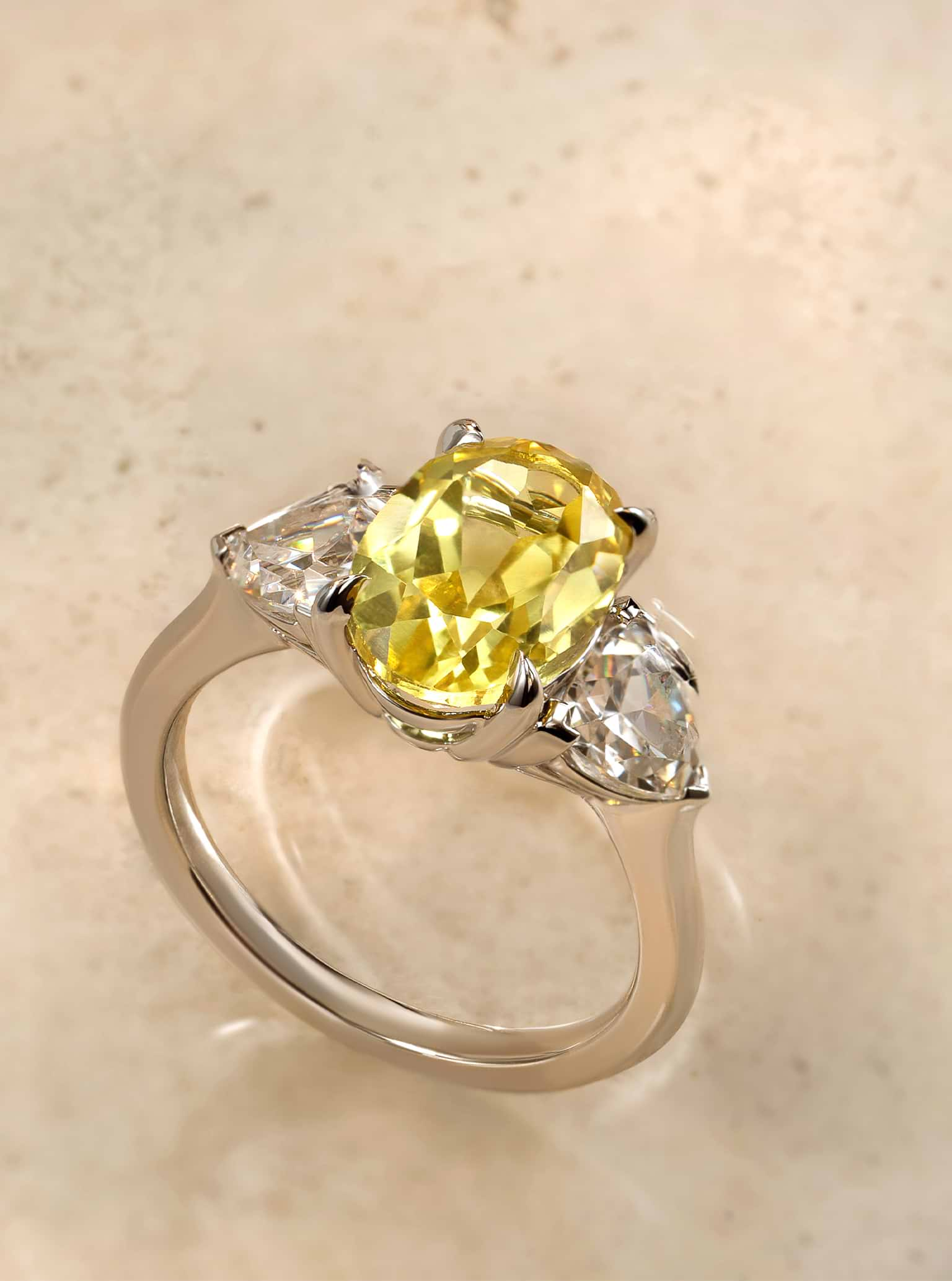

How To Set Diamonds According To Color
The metal you choose for your diamond setting can influence the color of your diamond. Make sure your diamond looks its best by selecting the most flattering type of metal.
- Colorless diamonds pair well with platinum, palladium, or white gold. The pure whiteness of colorless diamonds creates a cool tone that looks best with silvery metals. Choosing a cool metal will accentuate the diamond’s purity of color.
- Near colorless diamonds pair well with white, yellow, or rose gold. Mostly white, these versatile diamonds look great against any type of gold setting. The warm colors of yellow and rose gold will do a good job of making any color traces less noticeable.
- Faint colored diamonds pair well with yellow or rose gold. The warmth of yellow and brown undertones in faint colored diamonds looks best against equally warm metals.
Fancy Colored Diamonds
Those who crave the color and vibrancy of richly colored diamonds might enjoy the sparkle of fancy colored diamonds.
Diamonds naturally come in almost every color: yellow, blue, pink, green, purple, red, orange, gray, and even black. Fancy colored diamonds are rarer than colorless diamonds, which may add to their appeal. This rarity also extends to lab grown diamonds. There is a limited supply of colored lab grown diamonds; it’s estimated that only 1% of lab grown diamonds are colored.
Color rarity is the determining factor of a fancy colored diamond. The stronger and purer the color is, the more valuable the diamond will be. The most valuable colored diamonds are pink and blue. Yellow diamonds are not as rare, but they are still treasured for their warmth and golden tones. Fancy colored diamonds still have a grading scale, but they are different from colorless diamonds. The system rates their hue, tone, and saturation.
- Hue defines the main color of the stone
- Tone evaluates the lightness or darkness of the stone
- Saturation describes the intensity of the hue
The stone’s color level is determined by the tone and saturation, which is then graded on a scale that runs from lightest to darkest. The exact scale is:
- Lightest
- Faint
- Very Light
- Light
- Fancy Light
- Fancy
- Fancy Intense
- Fancy Vivid
- Fancy Dark
- Fancy Deep
The diamonds are then described with their hue. For example, a light blue diamond would be called a Fancy Light Blue Diamond, while a vivid pink diamond would be called a Fancy Deep Pink Diamond.
Fancy Deep diamonds are considered the most valuable, but those who prefer pastel shades can find soft colors that fit their aesthetic in the light range.
Color In Lab Grown Diamonds
The creation process of lab grown diamonds mimics nature, which means quality variations can still occur. This includes color. Lab grown diamonds should be exactly treated like mined diamonds when it comes to color grading.
The diamond color you choose should ultimately come down to personal preference. Colorless or Fancy Deep may be the most valuable diamonds on paper, but a faint colored diamond will be the most valuable to you if it’s what you find the most beautiful.
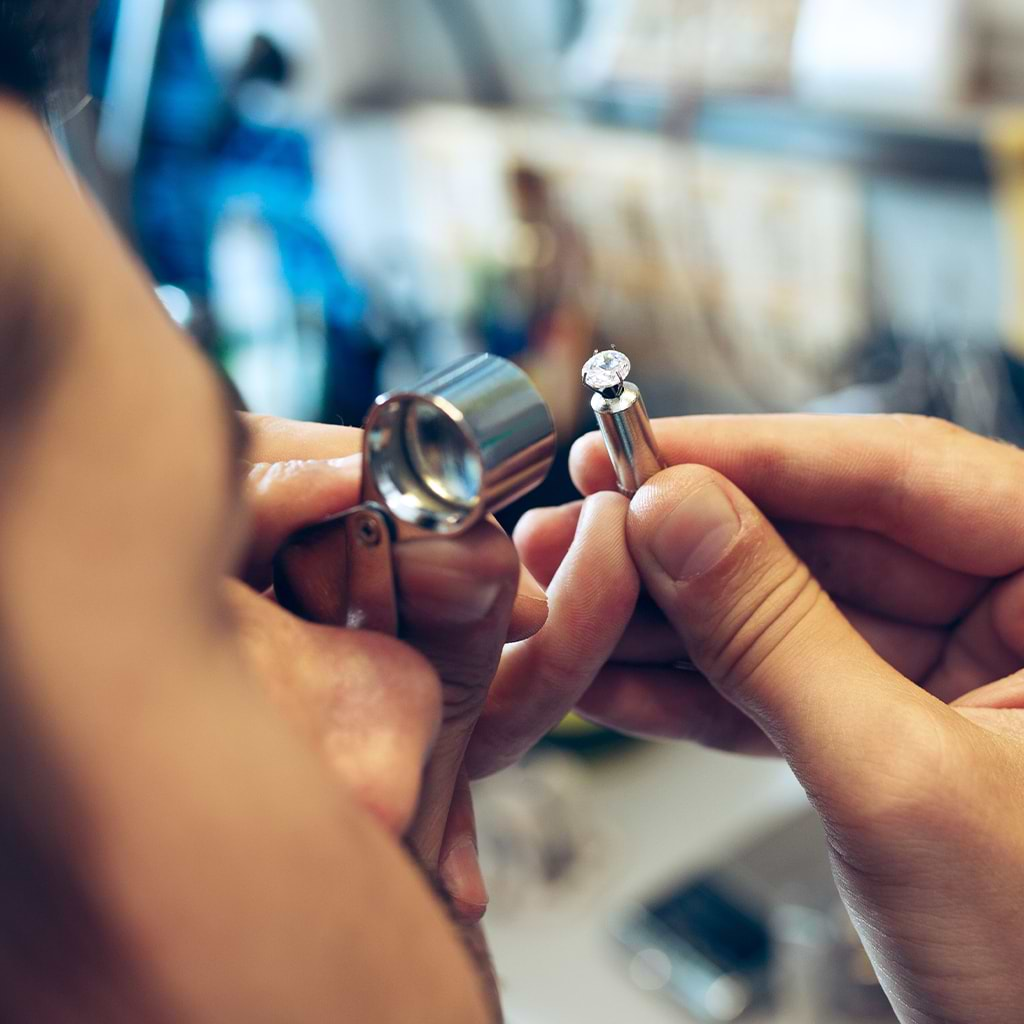
Diamond Clarity
A diamond’s clarity refers to the presence of impurities on and within the stone. Even when grown in a lab, tiny imperfections might be visible. These are called flaws or inclusions. They form during the growing process and are unique to each stone. The term "eye clean" refers to diamonds whose inclusions generally cannot be seen without magnification and are typically graded SI or higher on the clarity scale.
Clarity impacts the stone’s ability to let light pass through the stone. Inclusions can cause dispersion blockages, which affect the diamond’s overall brilliance and sparkle. The fewer inclusions a diamond has, the more rare and valuable it will be considered. Flawless diamonds, or stones with no imperfections, are the most prized.
If you want a diamond that maintains its brilliance without any visual distractions, select a gem without inclusions. To ensure your diamond is completely free from imperfections visible to the naked eye, opt for diamonds graded "VS2" or higher.

Diamond Clarity Grades
All diamonds are graded based on their clarity. Grading is determined by closely examining the diamond under 10X magnification. A gemologist will note the quantity, relief, and placement of inclusions to identify the clarity grade.
The clarity grading scale runs from Flawless (FL) to Included (I3). Some grades have different categories within the grade, like Very Very Slightly Included 1 and Very Very Slightly Included 2. The higher the number after grading, the more inclusions will be visible on and within the diamond.

- Flawless (FL). No imperfections or inclusions on the diamond’s surface. This is the rarest and most valuable type of diamond.
- Internally Flawless (IF). No visible imperfections or inclusions on the diamond’s surface, even under magnification. Although the diamond appears flawless, it still may have very minor inclusions that are difficult to see.
- Very Very Slightly Included 1 (VVS1) & Very Very Slightly Included 2 (VVS2). No visible imperfections or inclusions to the untrained eye. Minor inclusions may be visible under magnification.
- Very Slightly Included 1 (VS1). Small imperfections or inclusions may be visible under close inspection.
- Very Slightly Included 2 (VS2). More minor imperfections or inclusions may be visible.
- Slightly Included 1 (SI1), Slightly Included 2 (SI2) & Slightly Included 3 (SI3). Small imperfections and inclusions are visible, even to an untrained eye.
- Included 1 (I1), Included 2 (I2) & Included 3 (I3). Imperfections and inclusions are clearly visible.
The most prized diamonds are called “eye clean diamonds.” This term refers to diamonds whose inclusions cannot be seen without magnification. They are usually graded VS1 or higher.
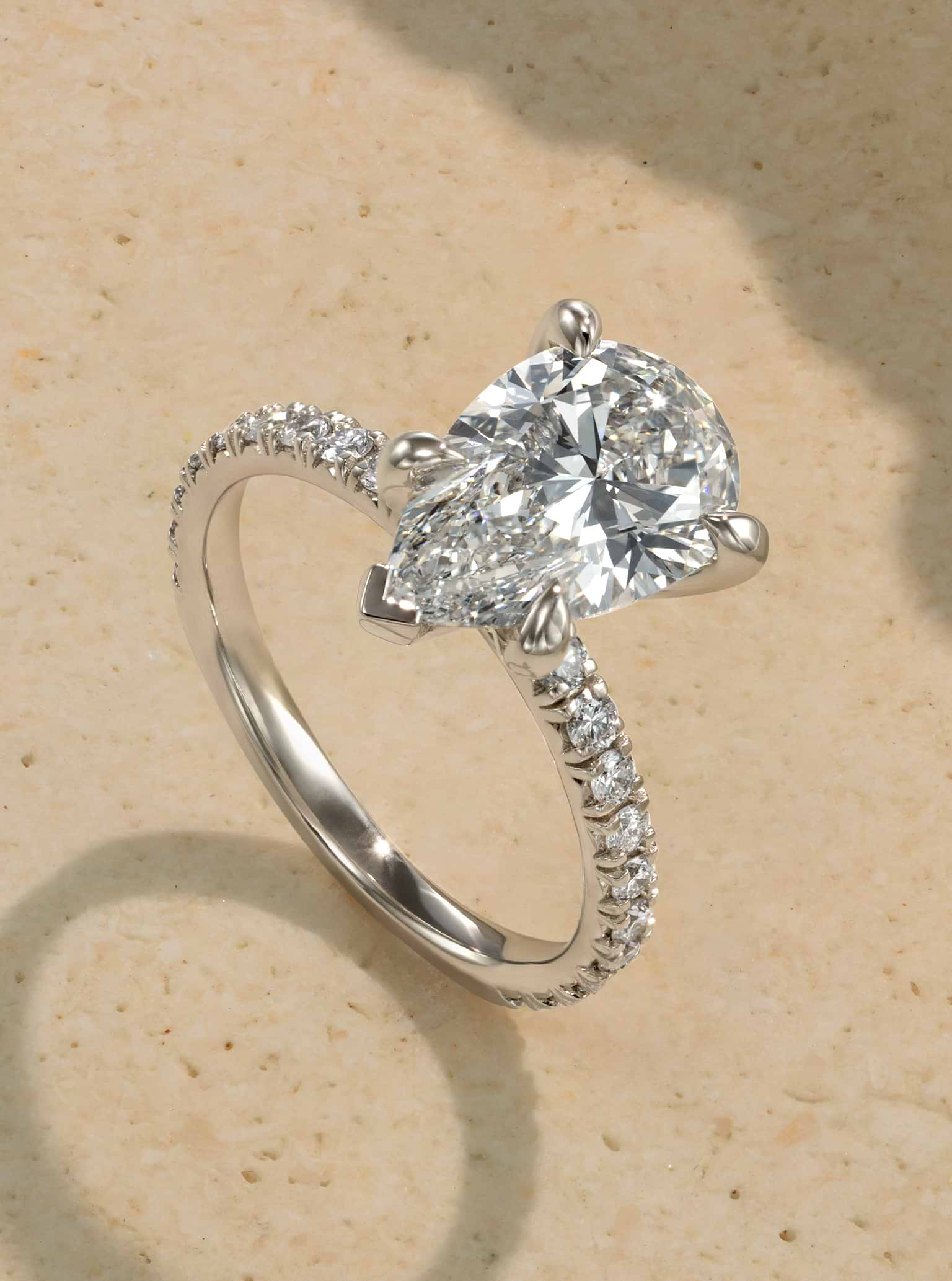

Clarity In Diamond Shapes
The shape of a diamond can affect its clarity. This is because certain shapes hide imperfections better than others.
Brilliant cut shapes, such as round and princess, are better at hiding imperfections than step-cut shapes, such as emerald and asscher. The large, open tables of step-cut shapes make inclusions more visibly noticeable, while the high level of facets in a brilliant cut makes inclusions more difficult to spot. This doesn’t mean you need to avoid step-cut diamonds. However, you should choose step-cut stones with a higher clarity grade.
Generally, the best diamond shapes for hiding inclusions are brilliant cuts in round, cushion, oval, radiant, or pear forms. You can choose diamonds with clarity grades as low as SI1 or SI2 with these shapes.
Pay close attention to the clarity grade if you’re looking for a diamond with a clean sparkle and impeccable brilliance. Any brilliant cut diamond with a grading of VVS2 or higher should meet your needs, but look for VS2 or higher for step-cut diamonds.
Diamond Clarity & Color
All 4Cs work together in harmony, but clarity and color can have an even more direct correlation with each other. Jewelers recommend balancing color and clarity when shopping for a diamond:
Jewelers recommend balancing color and clarity when shopping for a diamond:
- If you’re shopping for a diamond in the D-F color range, look for one with a clarity grade of VS2 or higher
- If you’re shopping for a diamond in the G-I color range, look for one with a clarity grade of SI or higher
Determining Clarity in Lab Grown Diamonds
Lab grown diamonds tend to have higher clarity grades than mined diamonds because they are grown in controlled lab environments. However, this doesn’t mean that they are all flawless. Even lab grown diamonds can have imperfections that affect their clarity grade.
Small metallic inclusions are possible within lab grown diamonds. Since they are created using high pressure and high temperature, remnants from the metallic flux that transports carbon gas to the diamond seed can be found within the diamond. These remnants are usually only visible under magnification, but they do count as inclusions. Other lab grown diamonds are created using chemical vapor deposition, which can cause microscopic amounts of graphite to form around the diamond seed as it grows.
Lab grown diamonds follow the same clarity grading scale as mined diamonds, so you can look for diamonds with the same ratings as mined diamonds to find your perfect sparkle.
Diamond Carats
Carat is the unit of measurement for the physical weight of diamonds and is one of the most objective measurements of the Four Cs for determining the value of a diamond. One carat is equal to 200 milligrams or 1/5 of a gram. Once the weight in milligrams is determined, the diamond is subdivided into 100 points. This ensures an ultra-precise measurement to the hundredth decimal place. Typical diamond weights range from 0.25 carats to 5 carats.
Carats are one of the most objective measurements of the 4Cs for determining the value of a diamond. It directly corresponds to the weight of a diamond, while other Cs are more subjective. The carat weight of a diamond determines how big it is. Up to 2/3 of the total carat weight may be lost when raw diamonds are cut and polished into finished diamonds.
The name "carat" derives from carob, the popular chocolate substitute. Carob seeds were the standard measurement tool for diamonds up until the 20th century. Their small size and consistent shape made them an effective counterweight for diamonds.
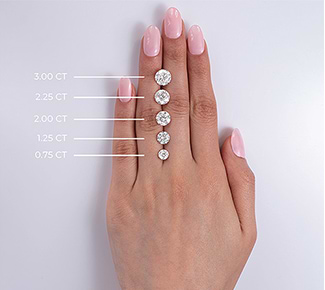
Round
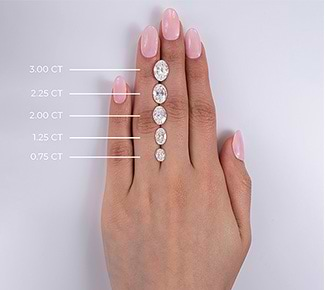
Oval
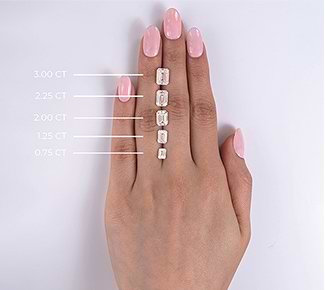
Emerald
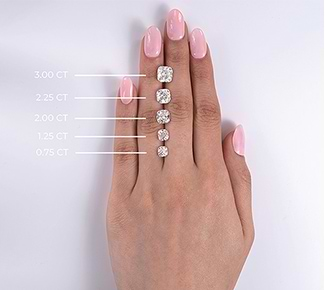
Cushion
The carat weight of a diamond determines how big it is. Up to two-thirds of the total carat weight may be lost when raw diamonds are cut and polished into finished diamonds.
Carats and Diamond Size
It’s important to remember that carats only determine the weight of a diamond, not its size. Shape, weight distribution, and cut quality also impact a diamond’s size. This means that two diamonds of the same carat weight can have different sizes.
However, a high carat doesn’t necessarily equate to a better diamond. A diamond with a small carat and high-quality cut will be more brilliant and beautiful than a diamond with a large carat and poor-quality cut. Most loose diamonds available for sale are one carat or less. The average engagement ring is also less than a carat.
High-quality diamonds with a high carat are very valuable. High-quality gems are harder to find in large quantities of rough, which means a single 2 carat diamond will cost more than two 1 carat diamonds of the same quality.
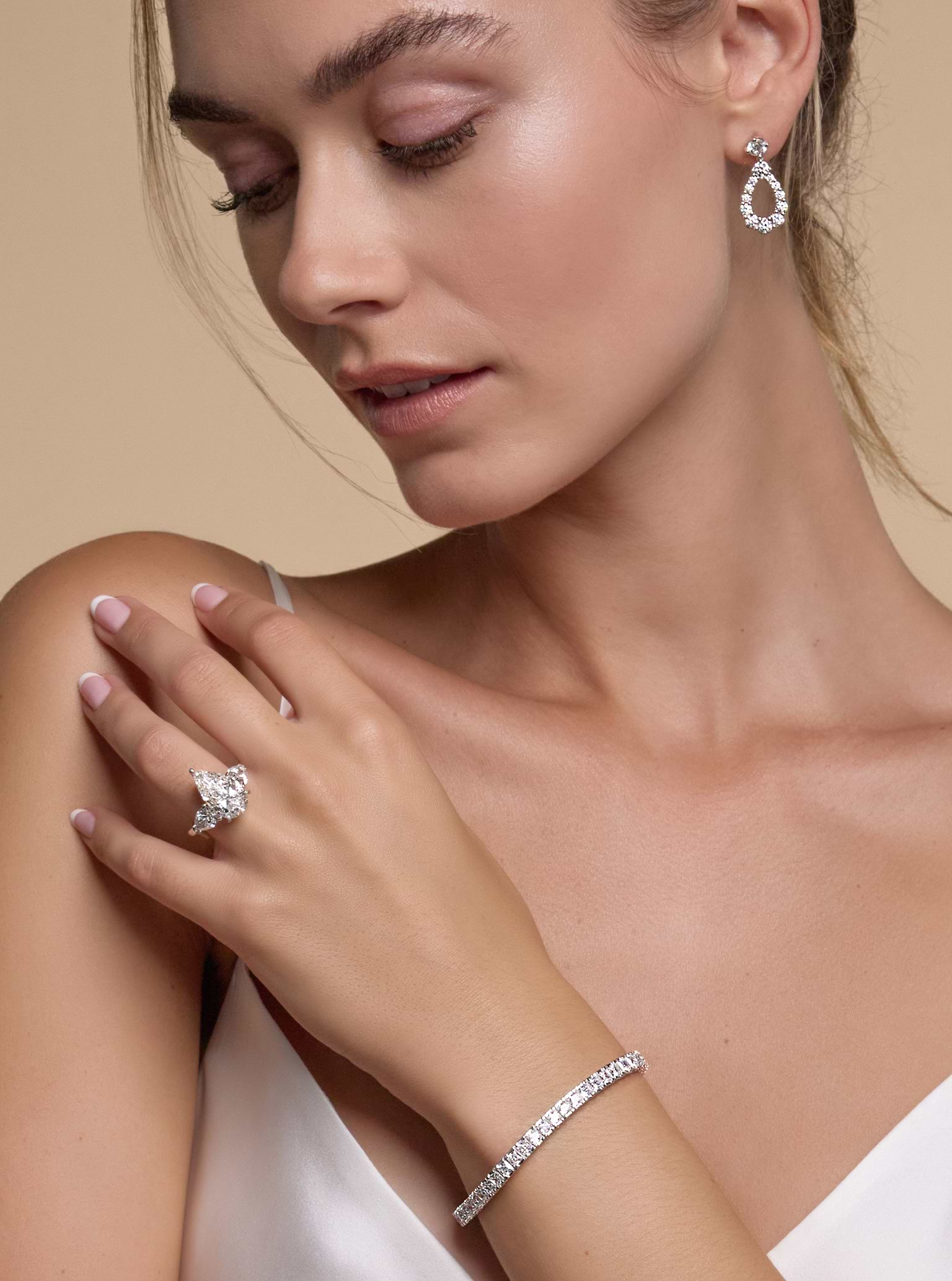
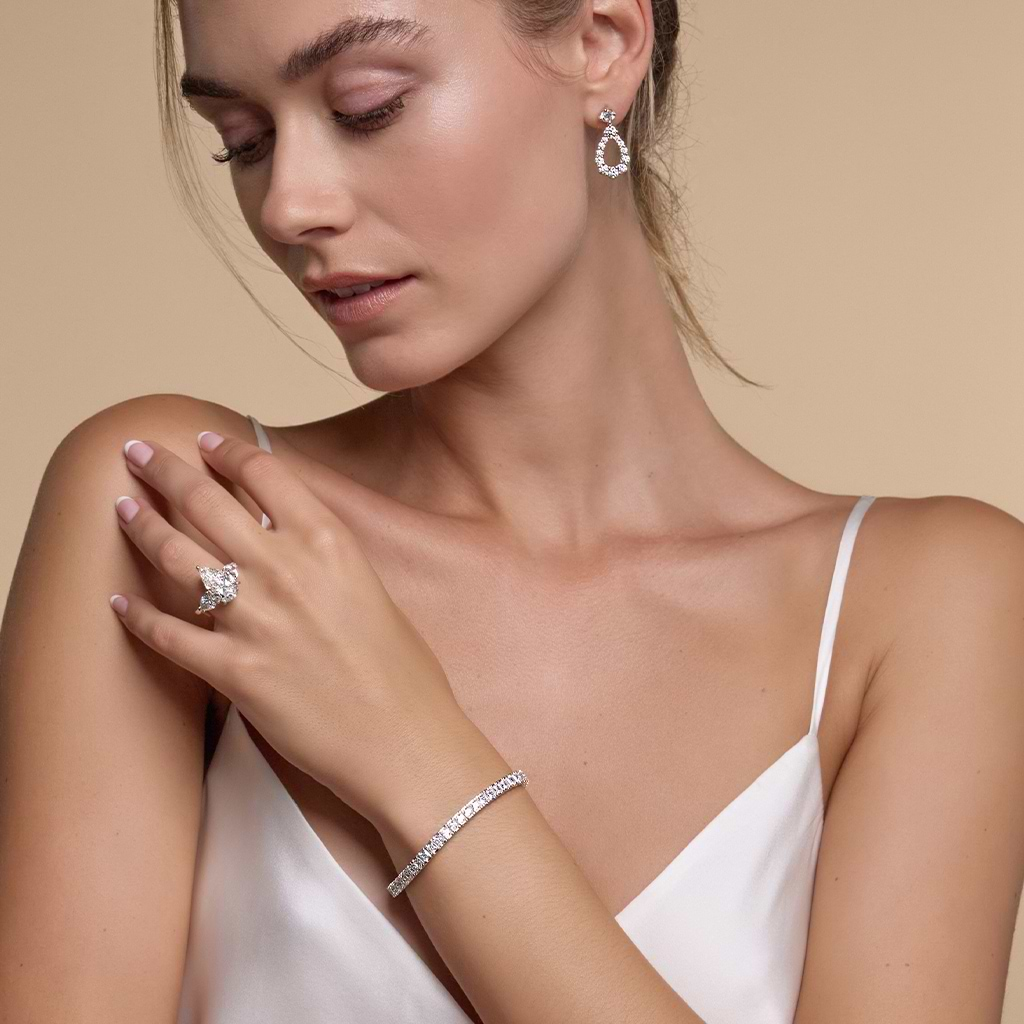
Carats & Diamond Appearance
Although we are often taught that bigger is better, this is not always the case with diamonds. Jewelers recommend paying more attention to the surface area of a diamond than its carat size, since it’s the more visible characteristic.
A diamond will increase in weight more than it increases in surface area. For example, a 0.50 carat diamond has a surface area of 5.1mm, while a one carat diamond has a surface area of 6.5mm. That’s only a 27% increase in surface area, despite having double the weight.
Additionally, differences in carat sizes can appear very minimal to the untrained eye. A 0.25 carat diamond will be noticeably smaller than a 2 carat diamond, but the difference in size between a 0.90 carat and a 1 carat diamond will not be substantial.
Carat & The Other Cs
Some diamonds are cut with an emphasis on carat size, but they often sacrifice sparkle and symmetry. Pay attention to the cut as well as carat to ensure you get a beautiful diamond in the size you want.
Note that the larger a diamond is, the more inclusions will be noticeable. Cut should always be a high priority, but you’ll also want to pay attention to clarity grades with a larger stone.
- 0.25 - 0.50 carat diamonds. These weights hide inclusions well, so you can choose lower clarity grades and put a higher emphasis on cut and color. Look for a diamond with a Very Good or Ideal cut grade.
- 0.75 carat diamonds. This weight still hides inclusions, but they will start to become more apparent. Choose a clarity grade of SI1 or SI2 and a cut grade of Very Good to Ideal.
- 1 carat diamonds. Inclusions will become more apparent but cut should still be your priority. Look for a stone with an Ideal or Excellent cut. If you’re choosing a design with a halo or side stones, put a higher emphasis on color and clarity grades.
- 1.25 - 1.5 carat diamonds. Prioritize cut and clarity. Look for stones with a clarity grade of VS2 or higher.
- 2 carat, 3 carat & 4 carat diamonds. Look for eye clean stones with a VS1 clarity grade or higher.
- 5 carat. Everything will be on display with a diamond this heavy. Look for one with Excellent cut, symmetry, and polish.
Carat Vs Karat
A carat should not be confused with karat, the term given for determining gold purity in jewelry. British visitors and expats may have a tougher time distinguishing the two since carat is used for both diamond weight and gold content in the UK.
Both terms are relevant to diamond ring shopping since the piece will have carats and karats. For example, a 1ct diamond ring in 14K gold means that the ring’s diamond weighs 1 carat and is set in 14karat gold.
Determining Carat in Lab Grown Diamonds
Lab grown diamonds can reach large carat weights, just like mined diamonds. Some lab grown diamonds have even weighed a whopping 15 carats!
Many shoppers love choosing lab grown diamonds to get more value for their money. Lab grown diamonds are more affordable than mined diamonds, which means shoppers can comfortably choose larger carat weights. They’re also more ethical because they are conflict-free, making them ideal for socially-conscious buyers.
Although size and weight play important roles in a diamond’s appearance, remember that a high carat should not be the determining factor when choosing a diamond. If you are shopping for lab grown diamond engagement rings, necklaces, earrings and other jewelry, look for a diamond with a carat weight that complements its cut, clarity, and color and not the other way around.
If you want to invest in a high-quality lab-grown diamond, you don't need to worry about it getting rusty or fading with time. These diamonds are well tested and are winning the hearts of many people.
The first advantage of lab-grown diamonds is that natural diamonds and lab-created diamonds can hardly be distinguished from one another. The untrained eye can never tell whether you’re wearing a man-made or natural diamond. In addition to their stunning appearance, they are also:
A socially acceptable choice. Because lab-grown diamonds are created in a laboratory, they don't harm any land surfaces.
Free of conflict and are ethically sourced. The production of lab-grown diamonds never involves harming or taking advantage of diamond miners. As a result, you will never have to worry that you are buying a "blood diamond."
On the other hand, the disadvantage refers to rarity. If you are looking for a natural gemstone coming from the earth without caring about the previous characteristics, then you probably won't prefer a diamond made in a laboratory.
Diamonds created in a laboratory have the same thermal and electrical conductivity as mined diamonds. As a result, they will pass the exam of a quality diamond tester.
